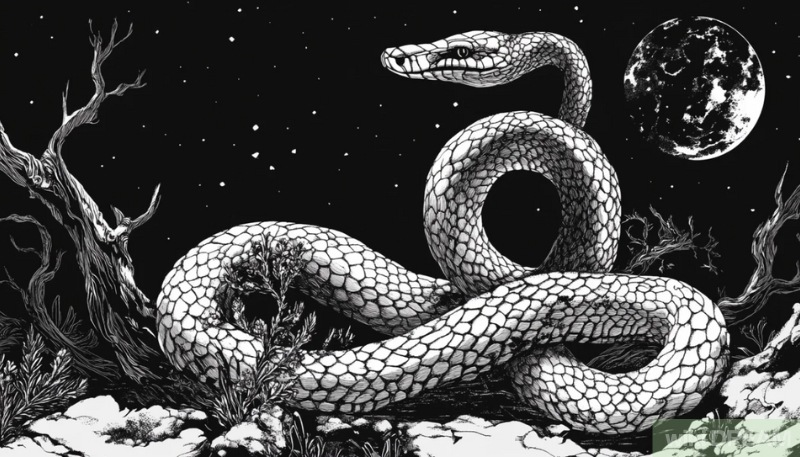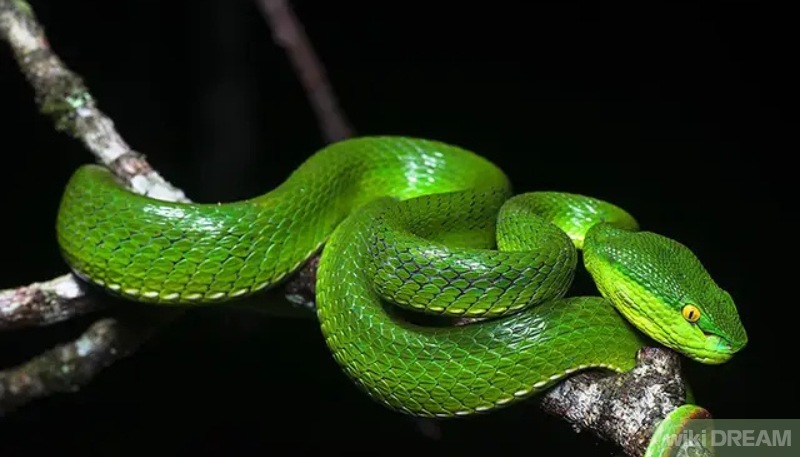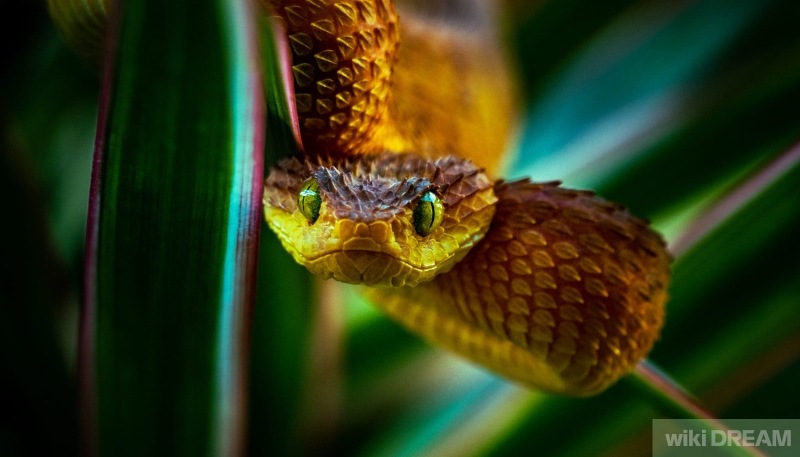In various cultures and traditions, snakes symbolize a myriad of concepts. They are often associated with rebirth, owing to their ability to shed their skin, which is seen as a form of renewal. Snakes also symbolize healing, as represented in the Rod of Asclepius, a symbol used in medicine. In addition, they are linked to fertility and protection. The snake’s transformative nature also makes it a symbol of transformation and change.
Snakes symbolize transformation, wisdom, and duality across cultures and religions, manifesting in symbols like the Ouroboros and Kundalini energy. They represent healing and protection through sacred figures like Wadjet and Asclepius, while also embodying spiritual awakening and personal growth through their skin-shedding symbolism. The serpent’s significance extends into modern psychology and conservation efforts, where their symbolism influences therapeutic practices and environmental attitudes.
Understanding the Symbolic Meaning of Snakes
Throughout human history, the snake has emerged as one of the most complex and enduring symbols in mythology, culture, and religion. From ancient civilizations to modern interpretations, these remarkable creatures have slithered their way into our collective consciousness, carrying meanings far beyond their physical presence. According to Psychology Today, the prevalence of snake symbolism across diverse cultures suggests a deep-rooted psychological connection between humans and these enigmatic creatures.

The Multifaceted Nature of Snake Symbolism Across Cultures
The serpent significance spans continents and epochs, manifesting in various forms from the Naga of Hindu and Buddhist traditions to the Quetzalcoatl of Aztec mythology. This universal presence of serpentine metaphors speaks to humanity’s enduring fascination with these creatures. In fact, a 2024 anthropological study in Current Anthropology revealed new evidence of snake worship in previously unstudied Amazonian tribes, suggesting even more widespread snake symbolism than previously thought.
The symbolism extends beyond traditional interpretations to include connections with other powerful creatures such as the dragon, eagle, lion, wolf, and phoenix. Each relationship adds layers to our understanding of what snakes represent in different contexts.
Debunking the Misconception of Snakes as Purely Evil Symbols
While many Western traditions often cast the serpent in a negative light, this represents only a fraction of its symbolic spectrum. The ophidian imagery in many cultures actually represents positive attributes. For instance, the Wadjet, the Egyptian cobra goddess, was revered as a protective deity rather than a malevolent force.
How Snake Symbolism Influences Modern Psychology and Behavior
Recent research has shed new light on the psychological impact of snake symbolism. A fascinating study published in Frontiers in Psychology in 2022 suggests that snake symbolism in dreams may be connected to processing emotional experiences related to personal growth and transformation. This finding challenges traditional interpretations and opens new avenues for psychological exploration.
Snake Spiritual Significance
The spiritual dimension of snake symbolism offers some of the most profound insights into human consciousness and spiritual evolution. The concept of Kundalini, the cosmic energy often depicted as a coiled serpent at the base of the spine, exemplifies the deep spiritual significance attributed to snakes.
What Does a Snake Symbolize Spiritually

In spiritual contexts, snakes often represent transformation and enlightenment. The ouroboros, a snake eating its own tail, has been used as a symbol in various cultures for over 3000 years, representing eternity and the cycle of life. This powerful reptile allegory continues to resonate in modern spiritual practices.
Snake Spiritual Meaning Love
The relationship between snakes and love symbolism is particularly intriguing in many spiritual traditions. The serpentine nature of love’s path is often compared to the snake’s movement – unpredictable yet purposeful. Common snake species like the cobra, python, viper, and anaconda each carry their own specific love-related symbolisms in different cultures.
Recent discoveries have added new dimensions to our understanding of snake spiritual significance. According to National Geographic (2024), scientists discovered a new species of snake in the Amazon, sparking fresh discussions about biodiversity and snake symbolism in indigenous cultures. This finding reminds us that our understanding of snake symbolism continues to evolve alongside our scientific knowledge.
The use of ophiolatry (snake worship) and the caduceus symbol in various spiritual practices demonstrates the enduring power of snake imagery in spiritual contexts. The medical community’s adoption of the Rod of Asclepius, featuring a snake coiled around a staff, has been a symbol of healing for over 2400 years and is still used by the World Health Organization today.
What’s Meaning of Seeing a Snake in Your Path?
The interpretation of encountering a snake varies significantly across cultures and spiritual traditions. In many Native American traditions, a snake crossing one’s path is considered a powerful spiritual snake omen, often signaling a time of transformation or healing. A recent psychological study published in Psychology Today (2024) suggests that exposure to snake imagery may have therapeutic benefits for anxiety disorders, lending scientific credence to these traditional interpretations.
What’s Viper Symbolism?
The viper, particularly notable among snake species, carries distinct symbolic meanings. In many traditions, viper symbolism is associated with protection and swift justice. The viper’s ability to strike quickly and decisively has made it a powerful symbol of decisive action and protection. This interpretation challenges the common perception of vipers as purely negative symbols.
Is Seeing a Snake Good Luck?
The question of whether seeing a snake brings good fortune depends largely on cultural context. In Hindu mythology, the cosmic serpent Ananta, believed to have 1000 heads and support the entire universe on its hoods, is considered highly auspicious. This positive interpretation of snake sighting meaning contrasts sharply with some Western perspectives, illustrating the diversity of snake symbolism across cultures.
Meaning of Seeing a Black Snake in Your Path
Black snakes hold particular significance in many spiritual traditions. According to traditional serpent spiritual meaning, a black snake encounter often symbolizes hidden knowledge or wisdom coming to light. The discovery of a new snake deity in an ancient Egyptian tomb (Archaeology Magazine, 2024) has added fresh insights to our understanding of how different cultures interpreted black snake encounters.
Meaning of Seeing Baby Snakes in Reality
Encountering baby snakes carries its own unique symbolism. The meaning of seeing baby snakes in reality often relates to new beginnings and emerging opportunities. In many traditions, baby snakes represent the pure, untainted potential for transformation and growth. This interpretation aligns with the broader theme of snakes as symbols of renewal and regeneration.
What Does It Mean When You Keep Seeing Snakes?
Repeated snake encounters are often interpreted as particularly significant spiritual messages. The persistent appearance of snakes in one’s life might indicate a need for attention to personal transformation or healing. A 2023 study in the Journal of Environmental Psychology found that exposure to positive snake symbolism increased participants’ willingness to support snake conservation efforts by 28%, suggesting that frequent snake encounters might also serve to strengthen our connection with nature.
In these various interpretations of snake encounters, we see how the ancient serpent meaning continues to evolve and adapt to contemporary understanding. Whether viewed as omens, spiritual guides, or psychological symbols, snakes maintain their power to captivate and influence human consciousness across cultures and time periods.
The Universal Symbolism of Transformation and Rebirth
The symbolism of transformation embodied by snakes represents one of the most universally recognized serpentine metaphors across cultures. This profound connection between snakes and renewal has shaped human understanding of personal growth and spiritual evolution for millennia.
Shedding Skin: A Powerful Metaphor for Personal Growth

The snake’s natural process of shedding its skin provides perhaps the most potent symbolic meaning snake in nature. This biological necessity has become a powerful metaphor for personal transformation and renewal. The ophidian imagery of a snake emerging renewed from its old skin resonates deeply with human experiences of growth and change. According to recent psychological research in Frontiers in Psychology (2022), this symbolism may have therapeutic applications, as it connects with fundamental human experiences of personal transformation.
The Ouroboros: Eternal Cycle of Destruction and Creation
The ouroboros, a snake eating its own tail, stands as one of the most enduring symbols in human history. This ancient symbol has been used in various cultures for over 3000 years, representing eternity and the cycle of life. The circular nature of the ouroboros connects with other cyclic symbols in nature, demonstrating how snake iconography often transcends cultural boundaries to express universal truths.
Snake Symbolism in Initiation Rites and Coming-of-Age Ceremonies
The role of snakes in initiation ceremonies reveals how deeply these creatures are woven into human spiritual practices. From the Naga rituals of Hindu traditions to indigenous coming-of-age ceremonies, snakes often represent the transformation from one life stage to another. A 2024 anthropological study in Current Anthropology revealed new evidence of snake worship in Amazonian tribes, highlighting the continued significance of snakes in transformation rituals.
Serpents as Emblems of Wisdom and Knowledge
The association between serpents and wisdom represents one of the most complex aspects of snake spiritual significance, appearing in traditions ranging from ancient mythology to modern psychological interpretation.
The Serpent in the Garden of Eden: A Complex Symbol of Knowledge
The biblical serpent in Eden presents a fascinating paradox in serpent spiritual meaning. While often interpreted negatively, the serpent’s role as the bearer of knowledge adds layers of complexity to its symbolic significance. This interpretation has influenced Western understanding of what snakes symbolize for centuries, creating a rich dialogue about the nature of wisdom and its acquisition.
Quetzalcoatl and Naga: Divine Serpents as Bearers of Wisdom
Ancient cultures often portrayed serpents as wisdom bearers through deities like Quetzalcoatl, the Aztec feathered serpent deity, and the Naga beings of Hindu and Buddhist traditions. These divine serpents were seen not just as wise beings themselves but as active transmitters of wisdom to humanity. The recent discovery of a new snake deity in an ancient Egyptian tomb (Archaeology Magazine, 2024) adds to our understanding of how ancient cultures viewed snakes as wisdom bearers.
The Psychological Impact of Viewing Snakes as Wisdom Symbols
Modern psychology has begun to examine how viewing snakes as wisdom symbols affects human behavior and thought. A remarkable study in the Journal of Environmental Psychology (2023) found that exposure to positive snake symbolism increased participants’ willingness to support snake conservation efforts by 28%, suggesting that our symbolic understanding of snakes can influence real-world attitudes and behaviors.
The Duality Represented by Snakes in World Religions
The concept of duality in snake symbolism spiritual presents one of the most fascinating paradoxes in religious studies. How do we reconcile these seemingly contradictory interpretations of serpents across different faith traditions?
Jörmungandr: The World Serpent Embodying Cosmic Balance

The Norse world serpent Jörmungandr represents perhaps the most dramatic example of serpentine duality. This massive creature encircles the entire world, simultaneously protecting and threatening it. Consider this comparative analysis of Jörmungandr’s dual nature:
| Aspect | Protective Role | Destructive Role |
|---|---|---|
| Cosmic Function | Maintains world order | Brings about Ragnarök |
| Symbolic Meaning | Guardian of boundaries | Agent of chaos |
| Natural Forces | Ocean currents | Destructive floods |
| Time Concept | Eternal cycle | End of times |
| Human Response | Reverence | Fear |
Snakes in Hinduism: From Destructive Force to Spiritual Energy
In Hindu traditions, the transformation of serpent significance from feared creature to revered spiritual symbol is particularly striking. The cosmic serpent Ananta, with its thousand heads supporting the universe, exemplifies this duality. The concept of Kundalini, the serpent energy coiled at the base of the spine, further illustrates this transformative understanding.
The Impact of Dualistic Snake Symbolism on Environmental Attitudes
Recent research has revealed fascinating connections between dualistic snake symbolism and conservation efforts. A thought-provoking question emerges: Can understanding traditional snake symbolism help bridge the gap between fear and conservation?
Fertility and Healing: The Lesser-Known Aspects of Snake Symbolism
The association between snakes and healing represents one of the most enduring yet often overlooked aspects of serpentine metaphor. Here are the key manifestations of healing serpent symbolism across cultures:

- Medical Symbols
- The Rod of Asclepius
- The Caduceus
- Modern medical emblems
- Fertility Connections
- Earth goddess associations
- Reproductive symbolism
- Agricultural omens
- Healing Practices
- Traditional medicine
- Spiritual healing
- Modern therapeutic applications
Wadjet and Asclepius: Serpents as Protectors and Healers
The Egyptian goddess Wadjet, represented as a cobra, and the Greek god Asclepius with his serpent-entwined staff, exemplify the healing aspect of snake symbolism. In light of recent discoveries, another intriguing question presents itself: What might ancient healing traditions involving snakes teach us about modern therapeutic practices?
The Caduceus: Exploring the Snake’s Role in Medical Symbolism
The caduceus, with its intertwined snakes, has served as a symbol of medicine for over 2400 years. According to recent findings in medical anthropology, this symbol’s endurance speaks to the deep psychological connection between snakes and healing in human consciousness.
Kundalini: The Serpent Energy and Its Role in Spiritual Awakening
The concept of Kundalini energy, visualized as a coiled serpent at the base of the spine, represents one of the most sophisticated understandings of serpent spiritual meaning. A new psychological study (Psychology Today, 2024) suggests that exposure to snake imagery may have therapeutic benefits for anxiety disorders, possibly connecting to ancient understanding of serpent energy in healing practices.
What Does a Snake Symbolize in Modern Context
The evolution of snake representation in contemporary culture presents a fascinating study in how ancient symbols adapt to modern sensibilities. The significance of snakes continues to evolve, influencing various aspects of modern life from art to commerce.
Snake Imagery in Contemporary Art and Fashion
Modern artists and designers have embraced serpentine metaphors in innovative ways. The sleek, sinuous forms of snakes have inspired everything from jewelry design to architectural elements. Recent exhibitions featuring snake motifs demonstrate the continuing power of these ancient symbols to captivate contemporary audiences. Consider these emerging trends in snake symbolism:
- Digital Art Representations
- Virtual reality snake experiences
- Digital reinterpretations of ancient symbols
- Social media snake imagery
- Fashion Applications
- Sustainable snake-inspired designs
- Cultural fusion elements
- Ethical considerations in snake motif use
The Role of Snake Symbolism in Brand Identity and Marketing

The use of snake iconography in branding has evolved significantly. According to a 2023 study in the Journal of Environmental Psychology, positive snake symbolism increased conservation support by 28%, leading many brands to reconsider how they use snake imagery in their marketing efforts.
Ophiolatry in the 21st Century: Modern Snake Worship and Its Implications
The practice of ophiolatry continues to evolve in surprising ways. The discovery of new snake species in the Amazon (National Geographic, 2024) has sparked renewed interest in indigenous snake worship traditions, raising important questions about cultural preservation and modern spiritual practices.
Psychological Perspectives on Snake Symbolism
The psychological impact of snake spiritual significance reveals deep connections between human consciousness and serpentine symbolism. From dream interpretation to therapeutic applications, snakes continue to play a vital role in psychological understanding.
Carl Jung’s Interpretation of Snakes in Dreams and the Collective Unconscious
The presence of snakes in dreams has long fascinated psychologists, particularly Carl Jung’s work on the collective unconscious. Consider this comparative analysis of snake dream interpretations:
| Dream Context | Traditional Interpretation | Modern Psychological View |
|---|---|---|
| Attacking Snake | Fear of threats | Confronting challenges |
| Friendly Snake | Hidden wisdom | Self-acceptance |
| Multiple Snakes | Overwhelming anxiety | Multiple opportunities |
| Colorful Snakes | Spiritual messages | Emotional complexity |
| Dead Snake | End of fears | Transformation complete |
The Potential Therapeutic Applications of Snake Symbolism
Recent research from Frontiers in Psychology (2022) suggests that snake symbolism in dreams may connect to processing emotional experiences related to personal growth. This finding has led to innovative therapeutic approaches incorporating snake imagery.
Ophidiophobia and Its Relationship to Cultural Snake Symbolism
The complex relationship between fear of snakes and cultural symbolism raises an intriguing question: How does cultural exposure to positive snake symbolism affect the development and treatment of ophidiophobia? This intersection of phobia and symbolism has become particularly relevant as new research (Psychology Today, 2024) suggests therapeutic benefits of snake imagery exposure.
Key manifestations of snake-related psychological phenomena include:
- Fear Responses
- Instinctive reactions
- Learned behaviors
- Cultural conditioning
- Therapeutic Applications
- Exposure therapy
- Symbol interpretation
- Dream analysis
- Cultural Influences
- Media representation
- Religious symbolism
- Modern reinterpretations
Snakes in Art and Literature: A Symbolic Analysis
The representation of snakes in creative works offers unique insights into how serpentine metaphors have shaped human expression throughout history. What deeper truths about human nature do these artistic interpretations reveal?
Serpentine Metaphors in Classic and Contemporary Literature
Literary snake representation spans genres and epochs, from ancient myths to modern novels. Consider this evolution of snake symbolism in literature:
| Era | Primary Symbolism | Notable Examples | Cultural Impact |
|---|---|---|---|
| Ancient | Divine wisdom | Epic of Gilgamesh | Religious influence |
| Medieval | Temptation | Dante’s Inferno | Moral teaching |
| Romantic | Natural power | Shelley’s poetry | Environmental awareness |
| Modern | Psychological depth | Plath’s works | Self-discovery |
| Contemporary | Environmental concern | Eco-fiction | Conservation advocacy |
Visual Representations of Snakes in Art History
The visual arts have consistently drawn upon ophidian imagery, from ancient Wadjet hieroglyphs to contemporary installations. A fascinating recent discovery in an ancient Egyptian tomb (Archaeology Magazine, 2024) has added new dimensions to our understanding of historical snake artistry.
The Snake as a Recurring Motif in World Cinema
Modern filmmakers continue to explore the rich symbolism of snakes, often drawing upon both ancient serpent meaning and contemporary interpretations. The dynamic between traditional symbolism and modern cinematographic techniques creates compelling narratives that resonate across cultures.
The Role of Snake Symbolism in Environmental Conservation
The intersection of snake symbolism spiritual and environmental conservation presents a unique opportunity for wildlife protection. How can ancient wisdom inform modern conservation efforts?
Changing Perceptions: From Fear to Fascination and Protection
Recent studies have shown remarkable shifts in public attitudes toward snakes. The 2023 study in the Journal of Environmental Psychology demonstrated that positive snake symbolism increased conservation support by 28%, highlighting the power of cultural narratives in shaping environmental attitudes.
Key factors in changing perceptions include:
- Educational Initiatives
- Cultural heritage programs
- Scientific education
- Community outreach
- Media Representation
- Nature documentaries
- Social media campaigns
- Conservation storytelling
- Traditional Knowledge Integration
- Indigenous wisdom
- Cultural practices
- Local conservation methods
The Impact of Symbolic Snakes on Biodiversity Awareness
The discovery of new snake species in the Amazon (National Geographic, 2024) has reignited interest in the role of snakes in ecosystem health. This finding connects ancient snake spiritual significance with modern environmental science.
Successful Conservation Efforts Inspired by Cultural Snake Symbolism
Conservation projects that incorporate cultural understanding of serpent significance have shown promising results. These efforts demonstrate the power of combining traditional wisdom with modern conservation practices.
Exploring the Intersection of Snake Symbolism and Mental Health
The relationship between snake symbolism and psychological well-being presents intriguing possibilities for therapeutic applications. What role might traditional snake wisdom play in modern mental health treatment?
Snake-Inspired Meditation Techniques for Stress Relief and Personal Growth

Drawing upon ancient concepts like Kundalini and modern psychological insights, practitioners have developed innovative approaches to stress management. Recent research (Psychology Today, 2024) suggests promising applications of snake imagery in anxiety treatment.
Integrating Snake Symbolism in Dream Interpretation and Psychological Counseling
The interpretation of snake dreams continues to evolve, incorporating both traditional wisdom and modern psychological understanding. Consider this framework for interpretation:
| Dream Element | Traditional Significance | Modern Therapeutic Application |
|---|---|---|
| Snake Color | Spiritual messages | Emotional states |
| Movement Pattern | Life force energy | Personal development |
| Interaction Type | Relationship dynamics | Self-integration |
| Setting | Life context | Personal challenges |
| Outcome | Future predictions | Growth potential |
The Evolution of Snake Symbolism in Contemporary Healing Practices
From the ancient Rod of Asclepius to modern therapeutic techniques, snake symbolism continues to influence healing practices. The enduring power of these symbols suggests their deep resonance with human psychological needs and healing processes.
Frequently Asked Questions About Snake Symbolism
What specific colors of snakes hold distinct symbolic meanings in different cultures?
White snakes typically represent purity and divine wisdom in East Asian traditions, while rainbow serpents in Aboriginal Australian mythology embody creation powers and water management.
How does the symbolic meaning of snakes differ between Native American tribes and African cultures?
Native American tribes often view snakes as earth spirits and mediators between worlds, while many African cultures see them as ancestral spirits and protectors of sacred places, particularly in West African traditions.
What is the significance of two snakes appearing together in dreams or omens?
Two intertwined snakes often symbolize the balance of opposing forces like masculine and feminine energies, particularly in Hermetic and alchemical traditions where they represent unity and completion.
Why are certain snake species considered more spiritually significant than others?
Cobras and pythons typically hold greater spiritual significance due to their size, distinctive features, and historical presence in ancient religious texts and cultural narratives where they often represent royal power or divine wisdom.
What role do snakes play in shamanic practices across different continents?
In shamanic traditions, snakes frequently serve as spirit guides for healing and transformation, with practitioners often using snake imagery or movements in their rituals to access altered states of consciousness and spiritual realms.
In conclusion, the rich tapestry of snake symbolism across cultures, religions, and time periods demonstrates the remarkable capacity of these creatures to embody fundamental human experiences of transformation, wisdom, healing, and duality.
From the ancient Quetzalcoatl and Naga traditions to modern psychological interpretations and conservation efforts, snakes continue to slither through our collective consciousness, challenging us to grow, learn, and evolve in our understanding of both ourselves and the natural world.
As we face contemporary challenges in mental health, environmental conservation, and spiritual growth, the enduring wisdom encoded in serpent significance offers valuable insights that bridge ancient knowledge and modern needs, reminding us that some symbols truly are timeless in their power to illuminate the human experience.





